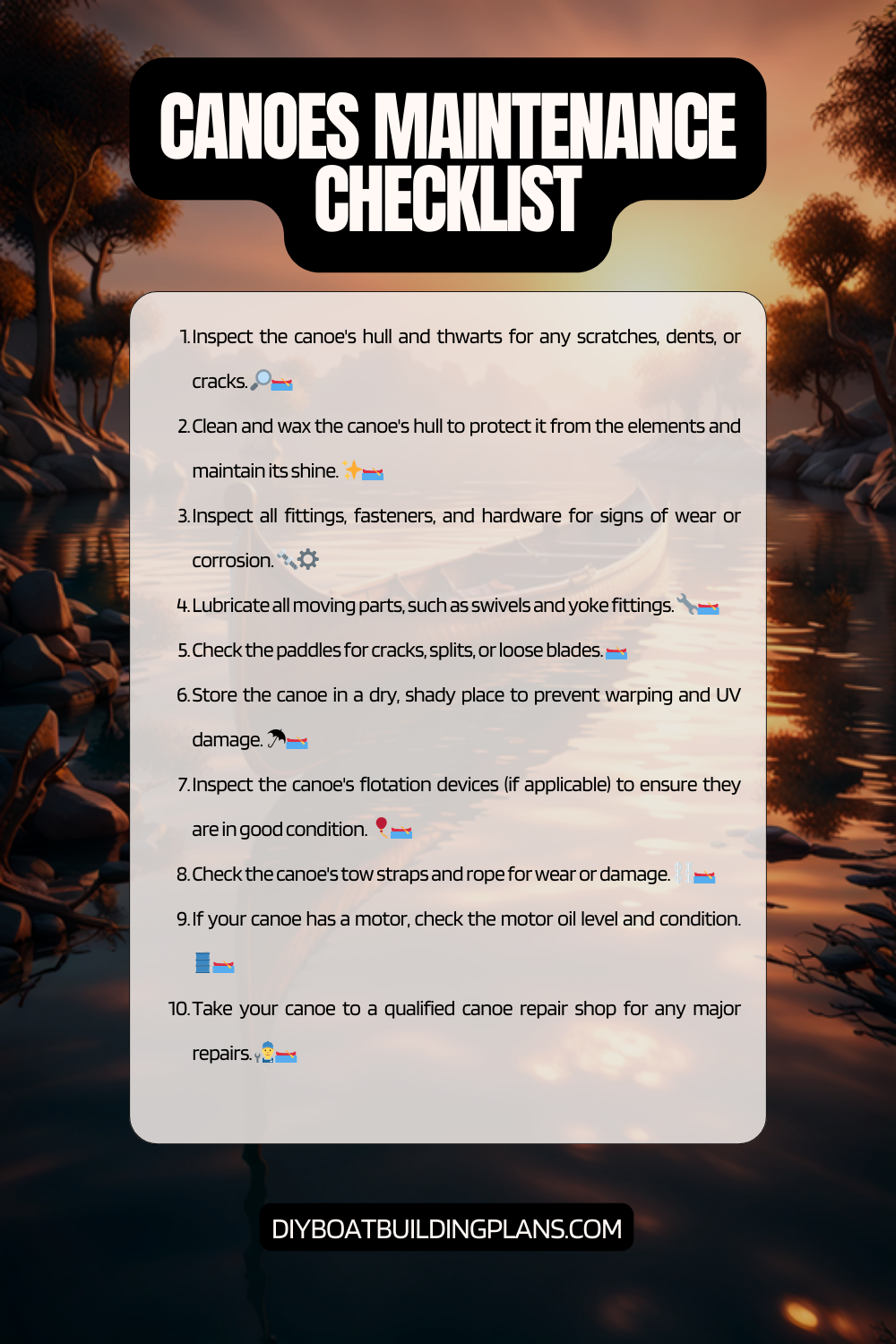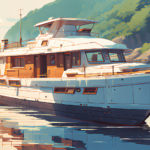Overview of Canoe Maintenance Tips
Maintaining your canoe is essential for ensuring its longevity and optimal performance. Canoes are subjected to various elements, such as water, sun, and debris, which can cause wear and tear over time. Regular maintenance not only extends the life of your canoe but also enhances its safety and performance on the water.
Key Takeaways
- Regular canoe maintenance is important to ensure safety and prolong the lifespan of your canoe.
- Basic tools and equipment required for canoe maintenance include a sponge, bucket, hose, and cleaning solution.
- Proper storage of your canoe involves keeping it dry, covered, and elevated off the ground.
- Inspecting your canoe for damage and wear and tear should be done before and after each use.
- Maintaining the canoe’s paddles and oars involves cleaning and oiling them regularly.

Importance of Regular Canoe Maintenance
Regular maintenance is crucial for several reasons. Firstly, it ensures the safety of both you and your passengers. By inspecting your canoe regularly, you can identify any potential issues or damage that may compromise its structural integrity. This allows you to address these problems promptly, reducing the risk of accidents or mishaps while out on the water.
Secondly, regular maintenance improves the overall performance of your canoe. By keeping it in top condition, you can paddle more efficiently and smoothly, enhancing your overall experience on the water. Neglecting maintenance can lead to decreased maneuverability and increased drag, making it more challenging to navigate through different water conditions.
Furthermore, neglecting maintenance can result in costly repairs or even the need for a replacement canoe. By addressing minor issues promptly, you can prevent them from escalating into major problems that require extensive repairs or replacement parts. Regular maintenance is a cost-effective way to ensure that your canoe remains in excellent condition for years to come.
Basic Tools and Equipment Required for Canoe Maintenance
To properly maintain your canoe, you will need a few essential tools and equipment. These include a soft-bristle brush, mild soap or detergent, a sponge or cloth, a hose or bucket for water, wax or polish for the hull, a repair kit with epoxy resin and fiberglass cloth, sandpaper, and a paddle oil or wax.
Using these tools properly is crucial for effective maintenance. When cleaning your canoe, use the soft-bristle brush and mild soap to gently scrub away dirt and grime. Rinse thoroughly with water from a hose or bucket. For stubborn stains or debris, you can use a sponge or cloth to apply a mild detergent and scrub gently.
Cleaning and Washing Your Canoe
| Task | Frequency | Tools Needed | Time Required |
|---|---|---|---|
| Removing Debris | After every use | Broom, Dustpan, Sponge | 10-15 minutes |
| Washing the Canoe | After every use | Bucket, Sponge, Mild Soap | 20-30 minutes |
| Drying the Canoe | After washing | Towel, Air Dry Rack | 30-45 minutes |
| Waxing the Canoe | Every 3-4 months | Wax, Applicator Pad | 1-2 hours |
Cleaning and washing your canoe regularly is essential for maintaining its appearance and preventing the buildup of dirt and grime. To clean your canoe, start by rinsing it with water to remove any loose debris. Then, use a soft-bristle brush and mild soap or detergent to scrub away dirt and stains. Rinse thoroughly with water to remove any soap residue.
For stubborn stains or debris, you can create a paste using baking soda and water. Apply the paste to the affected area and let it sit for a few minutes before scrubbing gently with a brush. Rinse thoroughly with water to remove the paste.
To protect the hull of your canoe, you can apply wax or polish after cleaning. This helps to maintain its shine and protect it from UV rays and other environmental factors. Apply the wax or polish according to the manufacturer’s instructions, using a clean cloth or sponge.
Tips for Proper Storage of Your Canoe
Proper storage is crucial for preventing damage to your canoe when it is not in use. When choosing a storage location, consider factors such as temperature, humidity, and exposure to sunlight. Ideally, store your canoe in a cool, dry place away from direct sunlight.
If possible, store your canoe indoors, such as in a garage or shed. This provides additional protection from the elements. If indoor storage is not available, consider investing in a quality canoe cover to protect it from rain, snow, and UV rays.
When storing your canoe, ensure that it is properly supported to prevent warping or damage. Use padded racks or cradles specifically designed for canoes to distribute the weight evenly and avoid putting excessive pressure on specific areas of the hull.
Inspecting Your Canoe for Damage and Wear and Tear
Regularly inspecting your canoe for signs of damage or wear and tear is essential for addressing issues promptly. Start by visually inspecting the hull for any cracks, dents, or scratches. Pay close attention to the areas around the bow and stern, as they are more susceptible to damage.
Check the gunwales for any signs of rot or splitting. Inspect the seats, thwarts, and yoke for loose or damaged hardware. Examine the paddles and oars for any cracks or splintering.
Additionally, inspect the interior of your canoe for any signs of water leakage or damage. Look for soft spots in the floor or seats, which may indicate rotting or delamination.
Repairing Minor Damage to Your Canoe
If you notice minor damage during your inspection, it is essential to address it promptly to prevent further deterioration. For small cracks or scratches in the hull, you can use a repair kit with epoxy resin and fiberglass cloth. Sand the damaged area lightly to create a rough surface for better adhesion. Follow the instructions provided with the repair kit to apply the epoxy resin and fiberglass cloth.
For damaged gunwales, seats, thwarts, or yokes, you may need to replace them entirely or repair them using appropriate hardware and techniques. Consult a professional or refer to manufacturer guidelines for specific instructions on repairing these components.
Maintaining the Canoe’s Hull and Interior
Maintaining the hull of your canoe is crucial for its overall performance and longevity. After cleaning your canoe, apply a protective wax or polish to the hull to prevent UV damage and maintain its shine. Regularly inspect the hull for any signs of wear or damage and address them promptly.
To maintain the interior of your canoe, ensure that it is dry before storing it. If you notice any signs of water leakage or damage during your inspection, address them promptly to prevent further deterioration. Avoid leaving any items or debris inside the canoe, as they can cause damage or create a breeding ground for mold and mildew.
Maintaining the Canoe’s Paddles and Oars
Proper maintenance of your canoe’s paddles and oars is essential for optimal performance on the water. After each use, rinse them with freshwater to remove any salt or debris. Inspect them for any signs of damage, such as cracks or splintering, and address them promptly.
To protect the wooden components of your paddles and oars, apply a coat of oil or wax regularly. This helps to prevent drying, cracking, and warping. Follow the manufacturer’s instructions for applying the oil or wax.
Download over 500 Boat Plans. Click on the link below.
-->Click Here<--
Tips for Maintaining the Canoe’s Outboard Motor
If your canoe is equipped with an outboard motor, proper maintenance is crucial for its performance and longevity. Follow the manufacturer’s guidelines for regular maintenance tasks, such as changing the oil, inspecting the propeller, and cleaning the fuel system.
Ensure that the motor is properly secured to the canoe and that all connections are tight. Regularly inspect the motor for any signs of damage or wear and tear, such as loose bolts or cracked components. Address any issues promptly to prevent further damage.
Canoe Maintenance Checklist

Conclusion – Canoe Maintenance Tips
Regular maintenance is essential for ensuring the longevity and optimal performance of your canoe. By following these tips and guidelines, you can keep your canoe in excellent condition for years to come. Remember to clean and wash your canoe regularly, store it properly when not in use, inspect it for damage and wear and tear, and address any issues promptly. By taking care of your canoe, you can enjoy many memorable adventures on the water while extending its lifespan.
FAQs – Canoe Maintenance Tips
What is canoe maintenance?
Canoe maintenance refers to the regular upkeep and repair of a canoe to ensure its longevity and optimal performance.
Why is canoe maintenance important?
Canoe maintenance is important to prevent damage, prolong the life of the canoe, and ensure safe and enjoyable paddling experiences.
What are some basic canoe maintenance tips?
Some basic canoe maintenance tips include cleaning the canoe after each use, storing it properly, inspecting it for damage, and repairing any damage promptly.
How do I clean my canoe?
To clean a canoe, use a mild soap and water solution and a soft brush or sponge. Avoid using harsh chemicals or abrasive materials that can damage the canoe’s surface.
How should I store my canoe?
To store a canoe, keep it in a dry, cool, and shaded area, away from direct sunlight and extreme temperatures. Store it upside down or on its side, and use padded supports to prevent warping or damage.
How often should I inspect my canoe?
Inspect your canoe before and after each use, and periodically throughout the season. Look for signs of damage, such as cracks, dents, or leaks, and repair them promptly.
What should I do if my canoe is damaged?
If your canoe is damaged, assess the extent of the damage and determine if it can be repaired. Small cracks or holes can often be repaired with epoxy or fiberglass patches, while larger damage may require professional repair or replacement.



